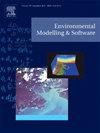一种新的农业生态相似性综合计算方法
IF 4.8
2区 环境科学与生态学
Q1 COMPUTER SCIENCE, INTERDISCIPLINARY APPLICATIONS
引用次数: 0
摘要
评估农业生态相似性对于形成可持续农业实践和资源配置至关重要,特别是在经历快速环境变化的地区。当前的评估方法面临着诸多挑战,如管理大型数据集、根据不同地点的时间变化进行调整,以及对可获取的全面分析工具的需求。为了解决这些挑战,本文提出了基于农业生态学傅立叶的相似性评估(AFSA),这是一种创新的计算方法,它应用傅立叶变换的原理来系统地评估农业生态站点之间的相似性。为了提高可用性,AFSA由webafsa补充,webafsa是一个为研究人员和政策制定者设计的用户友好的网络应用程序,强调易用性和广泛的适用性。实施AFSA和webafsa旨在改善土地适宜性评估,加强资源配置决策,并支持更好的可持续农业适应战略。通过提供复杂的计算方法和易于使用的决策支持工具,本研究为更明智和更环保的农业实践铺平了道路。本文章由计算机程序翻译,如有差异,请以英文原文为准。
A novel integrated computational approach for agroecological similarity
Assessing agroecological similarity is crucial for shaping sustainable agricultural practices and resource allocation, especially in regions undergoing rapid environmental changes. Current evaluation methods face challenges such as managing large datasets, adjusting for temporal variations across locations, and the need for accessible, comprehensive analytical tools. Addressing these challenges, this paper presents the Agroecology Fourier-based Similarity Assessment (AFSA), an innovative computational approach that applies principles of the Fourier transform to systematically evaluate similarities among agroecological sites. To enhance usability, AFSA is complemented by webafsa, a user-friendly web application designed for researchers and policymakers, emphasizing ease of use and broad applicability. The implementation of AFSA and webafsa aims to improve land suitability assessments, enhance decision-making for resource allocation, and support better adaptation strategies for sustainable agriculture. By offering both a sophisticated computational methodology and an accessible decision-support tool, this study paves the way for more informed and environmentally considerate agricultural practices.
求助全文
通过发布文献求助,成功后即可免费获取论文全文。
去求助
来源期刊

Environmental Modelling & Software
工程技术-工程:环境
CiteScore
9.30
自引率
8.20%
发文量
241
审稿时长
60 days
期刊介绍:
Environmental Modelling & Software publishes contributions, in the form of research articles, reviews and short communications, on recent advances in environmental modelling and/or software. The aim is to improve our capacity to represent, understand, predict or manage the behaviour of environmental systems at all practical scales, and to communicate those improvements to a wide scientific and professional audience.
 求助内容:
求助内容: 应助结果提醒方式:
应助结果提醒方式:


